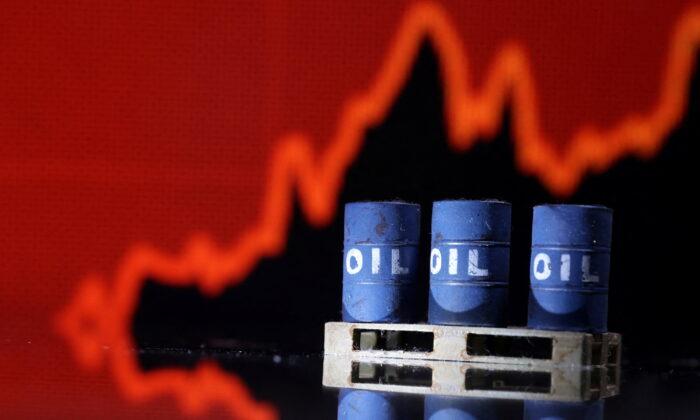Bullion's Rise Amidst Trade Tensions: A Detailed Look At Gold Prices

Table of Contents
The Impact of Trade Wars on Gold Prices
Uncertainty in the global trade environment significantly affects investor sentiment, driving demand for safe-haven assets like gold. When trade disputes escalate, creating instability and fear of economic downturn, investors often flee riskier assets and seek the security of gold. Recent trade disputes, such as the US-China trade war, have demonstrably impacted gold prices. Each escalation of tariffs or threats of further action has frequently corresponded with a rise in gold prices, reflecting investors' anxiety.
Currency fluctuations also play a vital role. The US dollar, often inversely correlated with gold prices, weakens during periods of trade uncertainty. A weaker dollar makes gold more affordable for investors holding other currencies, thereby increasing demand and pushing prices higher.
- Increased geopolitical risk leads to higher gold demand.
- Weakening US dollar boosts gold prices (inverse relationship).
- Safe-haven buying during market uncertainty pushes prices up.
- Central bank actions, such as purchasing gold, influence gold prices.
Analyzing the Supply and Demand Dynamics of Bullion
Understanding the interplay of gold supply and demand is essential to grasping price fluctuations. Gold supply is influenced by mining production, recycling rates, and central bank sales. Mining production is affected by factors like extraction costs, technological advancements, and geopolitical stability in mining regions. Recycling contributes a significant portion to the overall supply, influenced by economic conditions and the price of gold itself. Central banks, as major holders of gold reserves, can influence supply through sales or purchases.
Demand for gold is driven by several factors: jewelry, investment, and industrial applications. Investment demand, a significant driver of price, is fueled by exchange-traded funds (ETFs), gold bars, and coins. Jewelry demand is heavily influenced by cultural preferences and economic conditions in key markets like India and China. Industrial applications, while a smaller segment of overall demand, remain relatively stable, providing a consistent base.
- Mining production costs and output affect supply.
- Investment demand (ETFs, bars, coins) significantly impacts price.
- Jewelry demand varies by region and economic conditions.
- Industrial applications maintain a steady, albeit smaller, demand.
The Role of Central Banks in Gold Market Dynamics
Central banks play a crucial role in gold market dynamics. Their buying and selling activities can significantly influence prices. Central banks often hold gold as a reserve asset, a hedge against currency fluctuations and economic instability. Increased gold purchases by central banks signal confidence in gold as a safe-haven asset, which in turn can push prices higher. Conversely, significant sales can have the opposite effect. The strategic reasons behind central bank gold holdings include diversification of reserves, maintaining financial stability, and acting as a counterweight to fiat currencies. Changes in central bank policies regarding gold holdings directly impact the market.
Investing in Gold: Strategies and Considerations
Investing in gold offers several avenues: physical bullion (bars and coins), gold ETFs, and mining stocks. Physical gold provides tangible ownership but involves storage costs and security concerns. Gold ETFs offer diversification and liquidity, tracking the price of gold without the hassle of physical storage. Mining stocks, representing companies involved in gold extraction, carry higher risk but offer the potential for higher returns. However, it's crucial to remember that these investments are subject to market volatility.
- Physical gold offers tangible ownership but involves storage costs.
- Gold ETFs offer diversification and liquidity.
- Mining stocks carry higher risk but potentially higher returns.
- Diversification is crucial to mitigate risks.
Future Outlook for Gold Prices and Bullion Investment
Predicting future gold prices is inherently challenging, but analyzing current trends and potential future events can provide a reasoned assessment. Continued trade tensions, geopolitical instability, and inflationary pressures could all contribute to higher gold prices. However, factors such as rising interest rates, which make non-interest-bearing assets like gold less attractive, could exert downward pressure. Technological advancements impacting industrial applications could also influence demand.
- Continued trade tensions may support higher gold prices.
- Interest rate changes will influence gold’s attractiveness.
- Inflationary pressures could boost gold’s value as a hedge.
- Technological advancements might influence gold’s industrial demand.
Conclusion: The Future of Bullion Investment
The current rise in gold prices is largely driven by escalating trade tensions, increasing investor demand for safe-haven assets, and the interplay of supply and demand dynamics. Understanding these factors is crucial for informed investment decisions. Investors interested in bullion have various options, including physical gold, ETFs, and mining stocks, each with its own risk-return profile. The long-term outlook for gold remains positive for many analysts, considering the persistent uncertainties in the global economy. Explore your options and consider how adding gold to your portfolio can help navigate the complexities of the current global economic landscape. Research further and consider incorporating bullion into your investment portfolio to potentially mitigate risks associated with global trade uncertainty.

Featured Posts
-
 Military Base Showdown Us And China Vie For Regional Dominance
Apr 26, 2025
Military Base Showdown Us And China Vie For Regional Dominance
Apr 26, 2025 -
 Abb Vie Abbv Raises Profit Outlook Strong Sales Growth Fueled By New Drugs
Apr 26, 2025
Abb Vie Abbv Raises Profit Outlook Strong Sales Growth Fueled By New Drugs
Apr 26, 2025 -
 The Company That Laid You Off Wants You Back What To Say
Apr 26, 2025
The Company That Laid You Off Wants You Back What To Say
Apr 26, 2025 -
 7 New Orlando Restaurants To Explore Beyond Disney World In 2025
Apr 26, 2025
7 New Orlando Restaurants To Explore Beyond Disney World In 2025
Apr 26, 2025 -
 Chronology Of Karen Reads Trials Key Dates And Events
Apr 26, 2025
Chronology Of Karen Reads Trials Key Dates And Events
Apr 26, 2025
